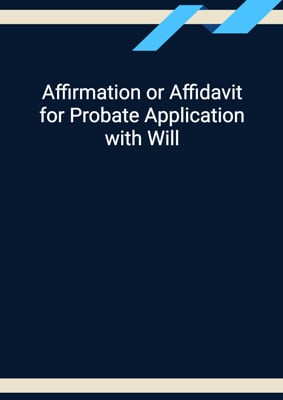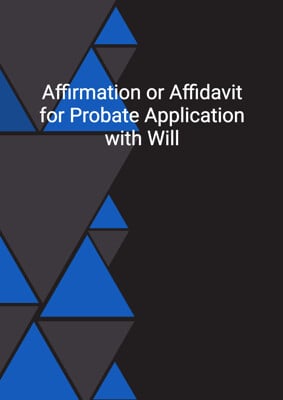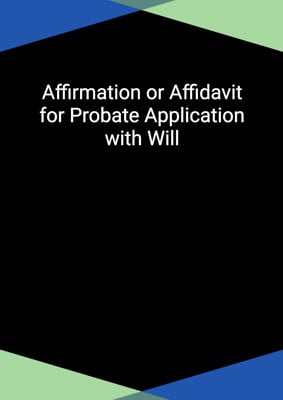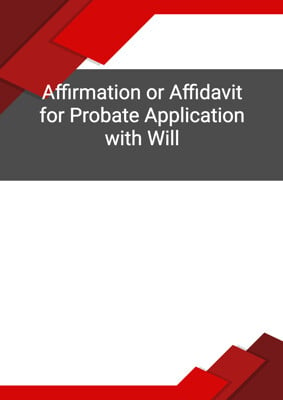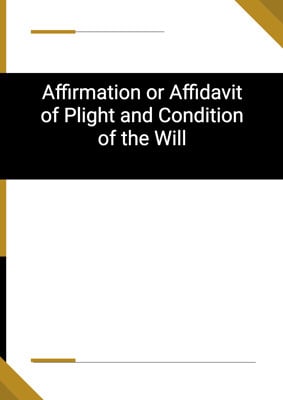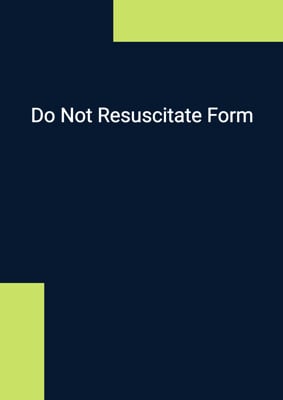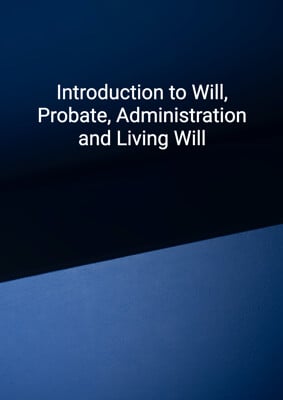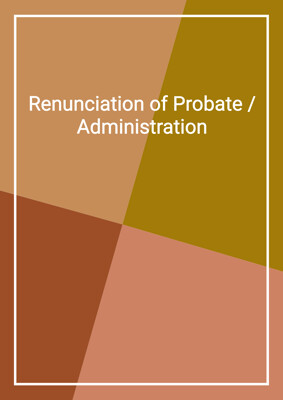How to Tailor the Document for Your Need?
01
Create Document
Fill in the details of the parties. You can click the "Fill with Member’s Information" button to complete it with information saved to your account.
02
Fill Information
Please fill in any additional information by following the step-by-step guide on the left hand side of the preview document and click the "Next" button.
03
Get Document
When you are done, click the "Get Document" button and you can download the document in Word or PDF format.
04
Review Document
The document should be signed by the authorised signatory (or directors of a company) and witnessed to complete the formality.
Document Preview
Document Description
The document titled 'Affirmation or Affidavit for Due Execution of the Will' is a legal document that serves as evidence of the due execution of a will. It is used in the court of the deceased's domicile to affirm or make an oath regarding the authenticity and validity of the will. The document contains a detailed introduction, followed by sections that provide information about the deceased, the execution of the will, and the affirmation or oath.
The introduction of the document briefly explains its purpose and importance. It states that the document is used to affirm or make an oath regarding the due execution of the will. This ensures that the court has sufficient evidence to validate the will and distribute the deceased's assets according to their wishes.
The first section of the document provides information about the deceased, including their name, address, and marital status. This information helps to identify the deceased and establish their legal status.
The second section of the document describes the execution of the will. It states that the affiant or deponent is one of the subscribing witnesses to the will. It mentions the date of the will and confirms that it is being produced as evidence. The affiant or deponent further states that the deceased signed the will in their presence and in the presence of another witness. This section emphasizes the importance of the affiant or deponent's presence during the execution of the will, as it ensures the authenticity and validity of the document.
The third section of the document contains the affirmation or oath. It states that the affiant or deponent solemnly affirms or makes an oath regarding the truthfulness of the contents of the document. The affiant or deponent signs their name and includes their address. The section concludes with the location and date of the affirmation or oath.
Overall, the 'Affirmation or Affidavit for Due Execution of the Will' is a crucial document in the probate process. It provides detailed information about the deceased, the execution of the will, and the affirmation or oath, ensuring that the court has sufficient evidence to validate the will and distribute the deceased's assets according to their wishes.
How to use this document?
1. Provide information: Fill in the court of domicile and the address of the deceased. This ensures that the document is filed in the correct court and identifies the deceased's location.
2. Describe the deceased: Enter the deceased's name, address, and marital status. This information helps to identify the deceased and establish their legal status.
3. Explain the execution of the will: Specify the date of the will and mark it as 'a'. Describe how the deceased signed the will and mention the presence of the affiant or deponent and another witness. This ensures that the court understands the process of executing the will and the presence of witnesses.
4. Affirm or make an oath: Choose either affirmation or oath based on the requirements. Sign the document and include the affiant or deponent's address. This confirms the truthfulness of the contents of the document.
5. Finalize the document: Include the location and current date of the affirmation or oath. This ensures that the document is properly dated and filed.
Note: It is important to consult with legal professionals or follow the specific instructions provided by the court to ensure compliance with local laws and regulations.
Not the right document?
Don’t worry, we have thousands of documents for you to choose from:



